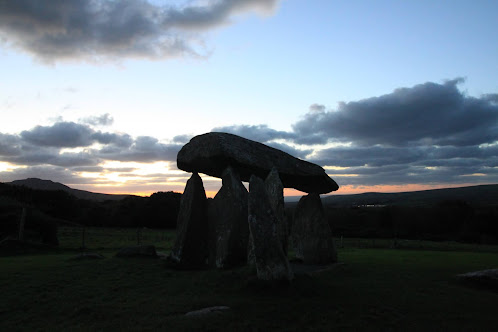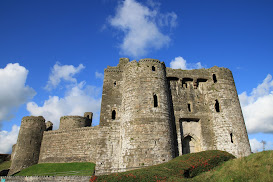Carreg Samson
Of all the stone circle hunting I have done in the U.K., I have come to discover that more often than not they are found in the middle of farmer’s fields. This being the case, they aren’t always the easiest spots to locate. Opposed to what one might think, “Wouldn’t you just see a giant stone in the middle of nowhere?”This is the case for what is known as Samson’s Stones. Not a
stone circle but rather standing stones. These were also used during the
neolith period to identify burial sites. PS. There is no parking near the
stones unless you want to risk parking at the farm, walk down the field and
hope the farmer doesn’t come out to shoot you for being on his private
property…
Now where was I…oh yes, legend has it the stones are called "Samson"
because Saint Samson of Dol allegedly placed the capstone in position with his
little finger. Right. And the aliens created Stonehenge.
The 5000-year-old Neolithic dolmen is located half a mile
west of Abercastle near the Pembrokeshire Coast Path in Wales with magnificent
views of the coastline in the background.
Pentre Ifan burial site at sunset (aka. The Race to Get a Picture Before Dark)
This site can be found in another field, (surprise, surprise). The stones share a pasture with a herd of brown cows that stare at tourists with their large, round eyes bewildered as to why visitors make such a fuss over stationary objects. Once the bovines know you’re not there to fed them, they MOOve on.
Ha.Ha. *clears throat.*
You’ll be happy to
know that there is parking at this location. Well, erhm….there is a small
lay-by next to a plaque the size of a dinner plate, (good luck finding it by
the side of road at dusk!) which declares this spot a historical monument.
After a short walk from the road, you’ll spy Pentre Ifan. One
of the most impressive Neolithic burial chamber sites in Wales. The stones’ height make them quite the
impressive megalith monument. The cap stone is over 17 feet long,
weighs over 16 tons and is balanced on just three support stones! I wouldn’t
want to be near it on the day it capsizes!








